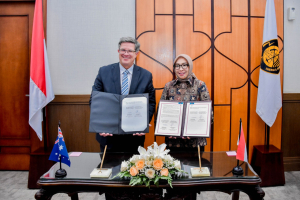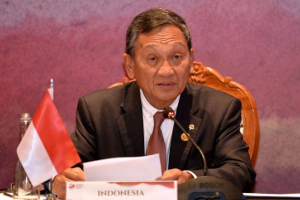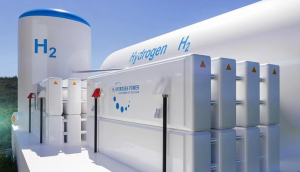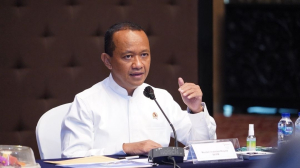Nuclear power plants included in Indonesia's 2033 general electricity plan
The Ministry of Energy and Mineral Resources (ESDM) has announced the inclusion of nuclear power plants (PLTN) in Indonesia's General Electricity Plan (RUKN) for 2033, signifying a new phase in power generation in the country.
“Our RUKN already states that nuclear can be included by 2033,” Eniya Listiani Dewi, Director General of New, Renewable Energy and Energy Conservation at the Ministry of ESDM, told a panel discussion leading up to COP-29 held in Jakarta on Wednesday, July 10, 2024.
Eniya cited that she has had multiple discussions about nuclear energy with Coordinating Minister for Maritime Affairs and Investment Luhut Binsar Pandjaitan.
The discussions primarily focused on safety issues, technological readiness, and the human resources required to manage nuclear power plants.
“Minister Luhut still needs to be assured regarding safety and the handling personnel, but we have prepared the regulations,” Eniya said.
The government is also discussing the establishment of the Nuclear Energy Program Implementation Organization (NEPIO) to oversee the implementation of nuclear power plants.
The Ministry of ESDM recently released new regulations concerning the Preparation Team for the Formation of NEPIO, as outlined in Ministerial Decree No. 34.K/HK.02/MEM/2024.
This regulation updates the previous Ministerial Decree 250.K/HK.02/MEM/2021 on the preparation team for NEPIO, ensuring compliance with the IAEA's requirements for establishing nuclear power plants.
Eniya highlighted that nuclear energy, along with hydrogen, ammonia, and other new energy sources, is included in the Draft Law on New and Renewable Energy (RUU EBET). The RUU EBET was submitted by the House of Representatives (DPR) to the government on June 14, 2022.
The RUU EBET is an initiative of the DPR, prioritized for discussion in the 2022 National Legislation Program (Prolegnas) as per DPR Decision No. 8/DPR RI/II/2021-2022.
This strategic move underscores Indonesia's commitment to diversifying its energy sources and advancing its nuclear energy program to meet future energy demands while ensuring safety and technological readiness.
Tag
Already have an account? Sign In
-
Start reading
Freemium
-
Monthly Subscription
20% OFF$29.75
$37.19/MonthCancel anytime
This offer is open to all new subscribers!
Subscribe now -
Yearly Subscription
33% OFF$228.13
$340.5/YearCancel anytime
This offer is open to all new subscribers!
Subscribe now







